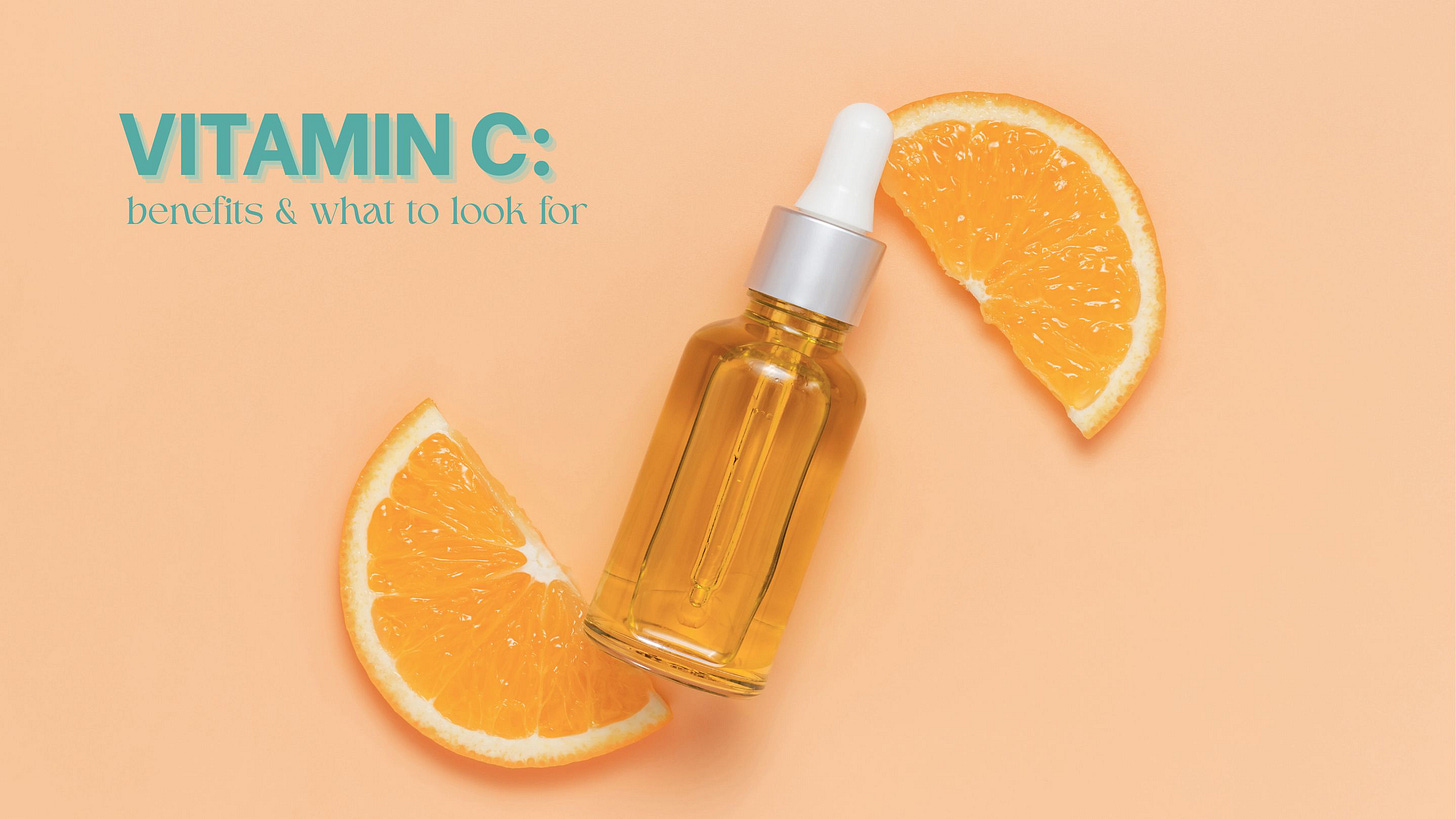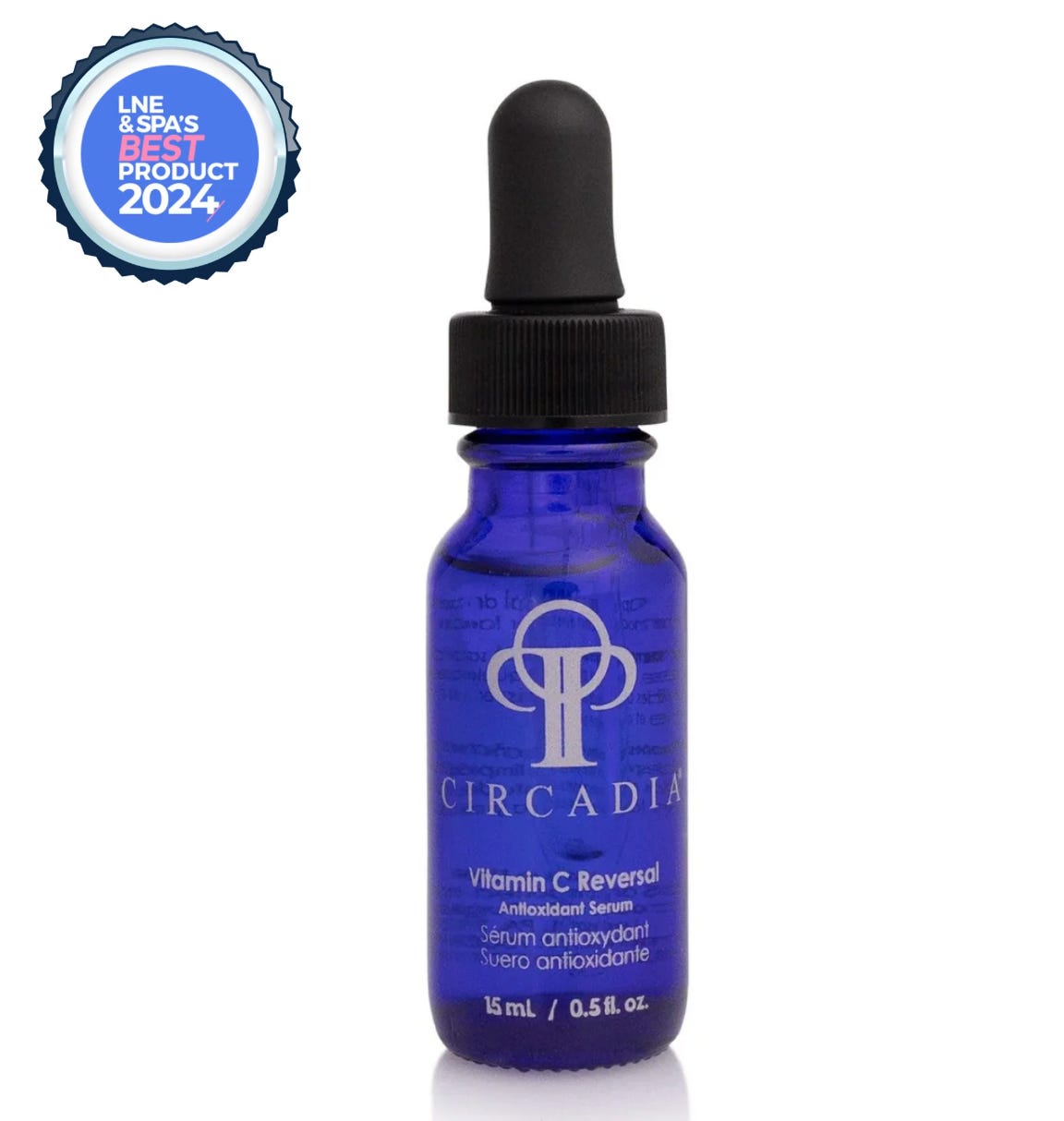Ingredient Spotlight: Vitamin C
Is Vitamin C the key to healthier skin?
What is it?
Topical Vitamin C has been a powerhouse ingredient, known to brighten and even out skin tone, boost collagen production, and protect against free radicals in the environment — especially sun damage!
What is it for?
Dull skin, dark spots, uneven tone. If you’ve noticed signs of aging or are looking for an extra boost against UV, stressors, and pollution.
Which form is best?
A serum! This will give you the most direct treatment in the highest concentration.
Look for L-Ascorbic Acid, the most potent and pure form of Vitamin C. This type is readily absorbed by the skin and available in a 10 to 20% concentration. While that amount is most recommended for effectiveness, be sure to start on the lower end to build tolerance. This form is also the most unstable and will oxidize quickly, so look for an opaque or brown bottle and store it in a cool, dark place.
Ascorbyl Glucoside, Magnesium Ascorbyl Phosphate (MAP), Sodium Ascorbyl Phosphate (SAP): What do these three forms have in common? They’re all stable and water-soluble, making them absorb quickly on the surface layer. Once combined with the skin, they convert to pure Vitamin C. A lower concentration provides an option for sensitive skin. MAP and SAP each give the added benefit of acne-fighting properties and help with scarring and hyperpigmentation.
Tetrahexyldecyl Ascorbate, Vitamin C Tetraisopalmitate, Ascorbyl Palmitate: All are oil-soluble, which penetrate deeper layers of the skin. They convert into active Vitamin C slowly, which results in a gentler, more widely tolerable formula. These would be the best choice for mature or dry skin, and anyone looking to focus more on treating elasticity and fine lines.
Are skin reactions a concern?
Vitamin C is powerful and not always gentle! It can cause mild tingling in the first week of use (which is normal), redness and irritation if the percentage is on the higher end, or increased sensitivity in reactive skin.
It’s not recommended to use with any exfoliating product. Think glycolic acid, salicylic acid, and AHA/BHA peels. Retinol is okay to continue using, as the two products are applied at different times of the day.
On the flip side: Pair with SPF for an ICONIC duo, or peptides, hyaluronic acid, or Vitamin E for a boost in antioxidants.
How to use it effectively:
To get the most benefits out of Vitamin C, apply a serum in the morning, ideally before your layer of SPF.
Product Recommendation:
Glymed+ Vitamin C Serum
Glymed+’s Vitamin C serum doubles as an excellent anti-inflammatory for post-procedure care.
Circadia Vitamin C Reversal
Circadia’s Vitamin C Reversal contains the power team of hyaluronic acid and Vitamin E for soothing hydration.
IMAGE Skincare ILUMA Intense Brightening Serum
IMAGE Skincare’s ILUMA Intense Brightening Serum with powerful Ascorbic Acid.
IMAGE Skincare Vital-C Hydrating Anti-Aging Serum
Vital-C Hydrating Anti-Aging Serum that contains the multi-Vitamin C complex.
IMAGE Skincare Vital-C Hydrating Anti-Oxidant A C E Serum
The Vital-C Hydrating Anti-Oxidant A C E Serum, which was a standout winner in Vogue magazine.
Among many more options! Keep in mind, IMAGE Skincare’s Daily Prevention line of SPF also contains Vitamin C for comprehensive protection against UV damage and free radicals. Studies have shown that this addition can increase the effectiveness of sunscreen overall!
To place an IMAGE order with me, fill out this form with any products you’re interested in purchasing! If you have any additional questions on Vitamin C as a skincare ingredient, drop a comment below.









